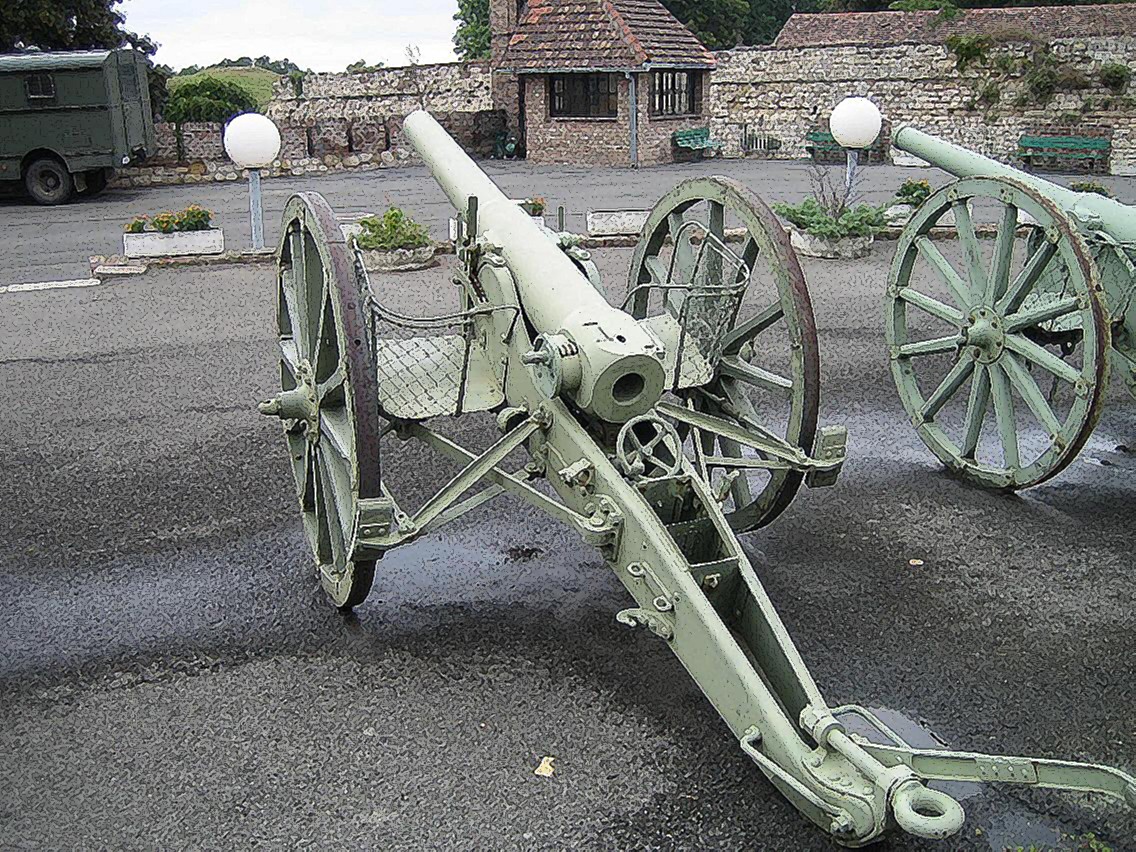


Canon 9cm K 73 Seclin
English Translation
Merci à Jean Marie Brams pour les photographies
 |
Historique Voir ICI
History Click HERE
Texte tiré de ce site
La superiorite technique de l'artillerie allemande pendant la guerre de 1870, avec ses canons a chargement par la culasse, n'empecha pas l'Etat-Major de desirer ameliorer encore son materiel, en tirant les enseignements du conflit.
Ainsi, les faiblesses d'obturation du tube des canons de campagne C/61 furent-elles corrigees avec l'apparition en 1873 des modeles C/73 munis de nouvelles a coin culasses Krupp.
Deux calibres furent introduits : un canon leger de 8cm (78.5mm) pour l'artillerie hippomobile de campagne, construit en quantites limitees, et un canon lourd de 9cm (88mm) pour l'Fuss Artillerie Artillerie 'a pied'.
En 1914, le '9cm K 73' ('K' = Kanone), quoiqu'obsolete (sans systeme recuperateur) equipait encore de nombreuses unites de la FussArtillerie, surtout dans ses versions successivement ameliorees C73/88 (allegement du tube) et C73/91 (tube en acier au nickel).
Des improvisations en canon anti-aerien furent realisees au cours du conflit. Les Armees Turques utiliserent de nombreuses pieces de ce genre, y compris apres 1918.
Caracteristiques principales :
Poids en position : 1308 kg
Calibre : 88 mm
Longueur du tube (totale) : 24 calibres
Longueur du tube (rayee) : 17 calibres
Nombre de rayures : 24
Poids du projectile : 7.5 kg
Vitesse initiale : 442 m/s
Portee : 6500 m
Pointage en hauteur : -10 / +41 degres
Pointage en direction : aucun
The technical superiority of the German artillery during the 1870 war (with the first breech-loading guns) did not prevent the General Staff from willing to improve its material, capitalizing on the battlefield experiences.
This is how the obturation weaknesses of the old fieldguns C/61 were corrected with the design in 1873 of the C/73 guns equipped with Krupp breech blocks.
Two different calibres were planned : a light 8cm (78.5mm) gun for the field artillery, manufactured in small quantities, and a heavy 9cm (88mm) fieldgun for the 'foot' artillery.
In 1914, the obsolete '9cm K 73' ('K' = Kanone), with no recoil system, was still arming numerous units of the FussArtillerie, in a later improved version C73/88 (lightened tube), and mainly C73/91 (tube in nickel-alloyed steel).
During the war, improvisations were performed to transform some of these into anti-aircraft guns. The Turkish armies used large amounts of the K73 gun, until as late as 1923.
Main characteristics :
Weight in firing position : 1308 kg
Calibre : 88 mm
Tube length (total) : 24 calibres
Tube length (grooved) : 17 calibres
Projectile weight : 7.5 kg
Initial velocity : 442 m/s
Maximum range : 6500 m
Elevation range : -10 / +41 degrees
Direction range : none
Autres Photoscopes Others Walk Around
Canon 9cm K 73 Aubagne
Canon 9cm K 73 Bitche
Canon 9cm K 73 Seclin